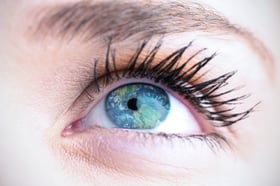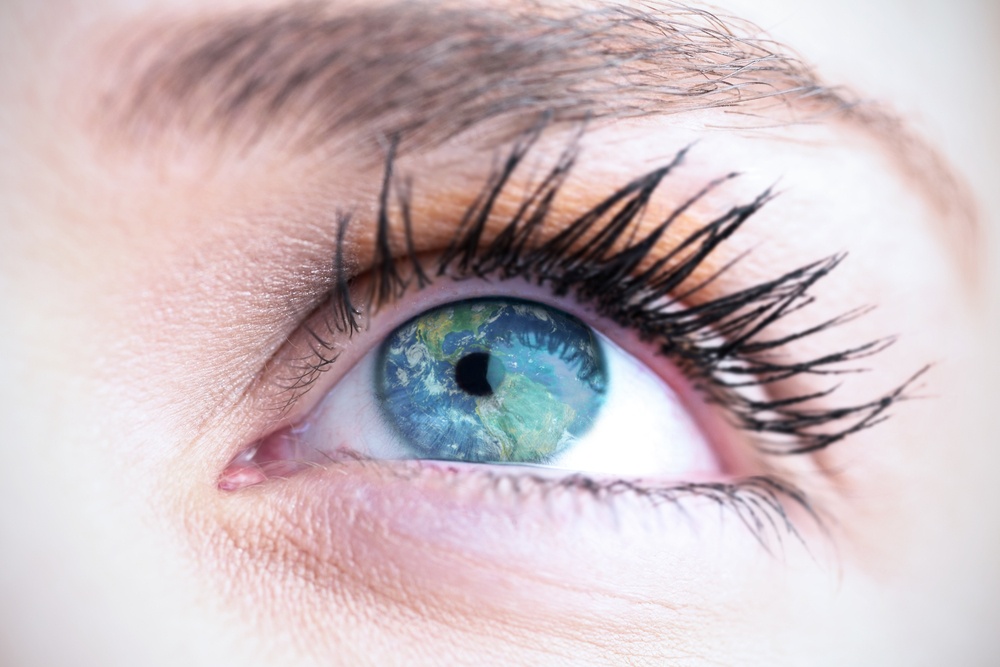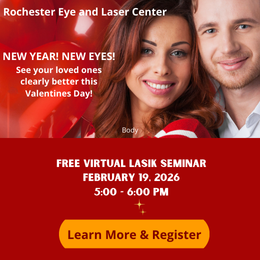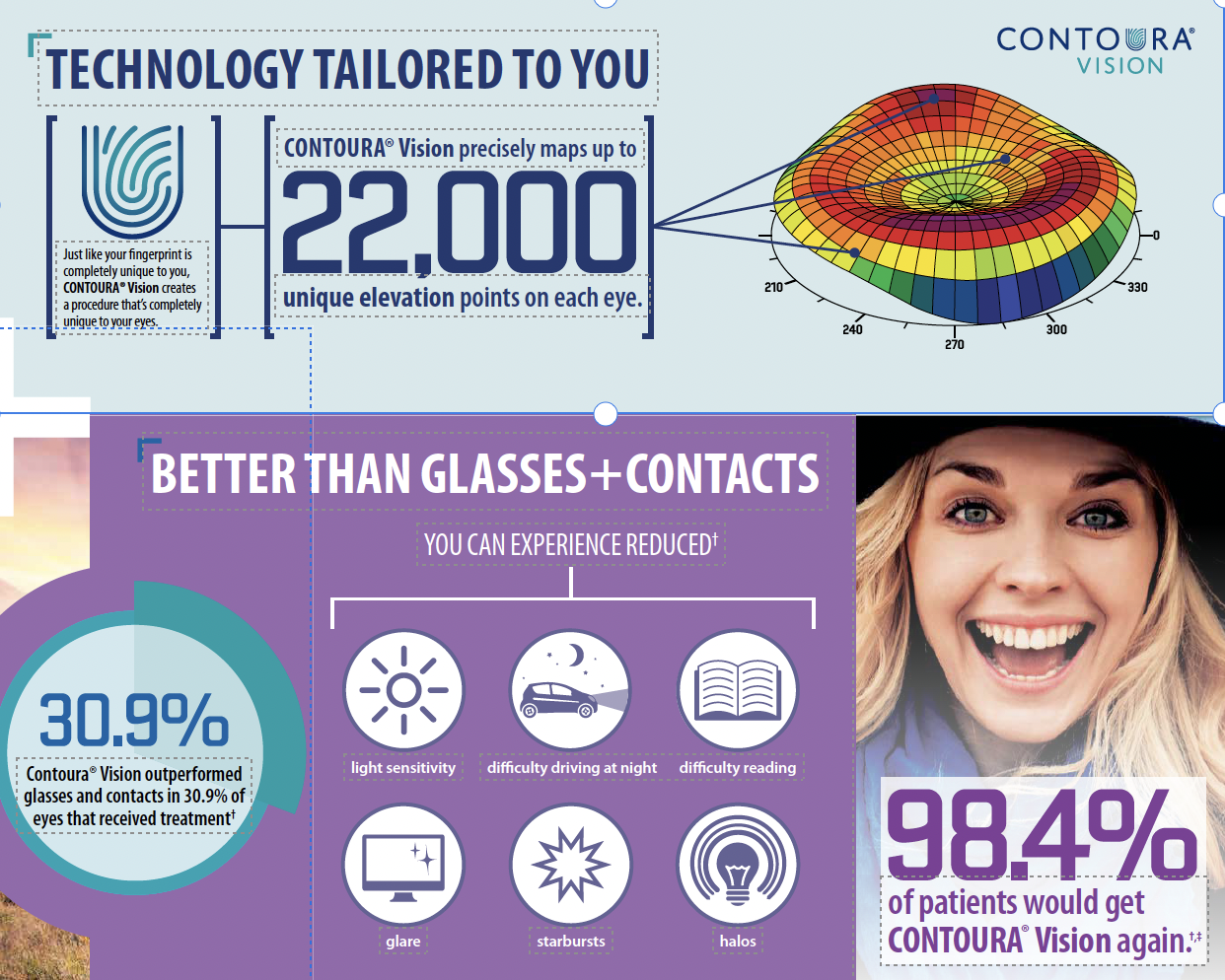 How much would a blind man pay to restore his sight? I think for almost anyone, that answer would be: “everything I have.” It’s my mission, and the sacred pledge of every ophthalmologist, to preserve and protect the vision of our patients. When I have a patient who has lost vision due to something they could have avoided, it’s tragic and it saddens me. So let’s talk about how to keep any damage to your eyes from happening
How much would a blind man pay to restore his sight? I think for almost anyone, that answer would be: “everything I have.” It’s my mission, and the sacred pledge of every ophthalmologist, to preserve and protect the vision of our patients. When I have a patient who has lost vision due to something they could have avoided, it’s tragic and it saddens me. So let’s talk about how to keep any damage to your eyes from happening
Vision is without a doubt our most treasured sense. Protecting your vision is infinitely cheaper than trying to restore it. Preserving and protecting your vision requires some care, but fortunately, it’s not burdensome.
Care of Your Eyes
One of the biggest risks of wearing contact lenses is corneal infection. Over 1 million emergency room visits in the United States are the result of a corneal infection. Corneal infections result in pain, loss of vision, blurred vision, corneal transplants, and corneal scars. Contact lens infections can result from several poor practices. The biggest risk factor for corneal infection is sleeping in your soft contact lenses. (https://pubmed.ncbi.nlm.nih.gov/16083417/) When we sleep in our contact lenses, the acidity of our tear film goes up and the bacteria are pressed right against the surface of the eyes. Think of wearing a dirty sponge on your eye. Yuck! That’s what contact lenses are like. The bacteria stick to the porous contact lens material, and when you are asleep they get to work infecting your cornea.
How many of you have seen someone just put a contact lens in their mouth and then put it back in their eye? This is a terrible practice and puts your eyes at high risk. The surface of your eyes has a skin layer called corneal epithelium that is 1/20 of a millimeter thick. If bacteria penetrate this barrier, they can set up shop and cause inflammation and scarring in the collagen of your cornea. This scar never goes away! We see this very frequently in our practice. Often the patient doesn’t even know that they have had a corneal infection. If the infection occurs in the center of your cornea, it can cause permanent blurred vision. Certain types of infection are more likely in ponds or lakes that are contaminated with a type of parasite that is very difficult to get rid of, even with antibiotics. This is called acanthamoeba.
The take-home message is to never sleep in your contacts! Always use fresh solutions. If you can afford it, use daily disposables. Never put a contact lens in your mouth and then put it back in your eye. If your eyes are increasingly red or irritated when your contacts are in, remove your them and don’t put them back in until the redness has completely disappeared.
There is another lesser-known problem that affects contact lens wearers called giant papillary conjunctivitis (GPC). GPC is basically an allergy to contact lens material. People wearing dirty contact lenses for very long periods of time are most likely to develop this. The symptoms are redness, irritation, and inability to wear contact lenses for more than a very short period of time before they start to irritate your eyes terribly. When this happens, it’s difficult to ever wear contact lenses again. We see this a lot in our practice because people who have become contact lens intolerant can either wear glasses or have laser vision correction. We vote for LASIK!
Care of Your Eyes “During” LASIK
In the time surrounding your LASIK procedure, you should have your contact lenses out of your eyes and wear only glasses for a minimum of three days. The reason for this minimum is to decrease the number of bacterial colony-forming units. There is another reason that is often given: your prescription can change due to contact lenses. I have only observed this with rigid gas-permeable contact lenses which can mold the eye. However, we often see an increase in astigmatism when the contact lenses have been out for three or more weeks. By checking and rechecking at different time intervals, we can be assured that your prescription is stabilized.
Perhaps the most important thing after LASIK is to take the medicated drops we prescribe.
What are My Activity Limitations After LASIK?
In my opinion, the only directive is: don’t get poked in the eye! (Also take your medications as directed.) This directive to not get poked in the eye is not at all facetious. What I mean is that you can go head a soccer ball, go snowboarding, stand on your head during yoga, or any other activity the very next day. As long as you do not get poked in the eye, you won’t move the LASIK flap. In my practice, we have had about a half dozen toddlers (18 months seems to be the most common time for some reason-I suppose it’s because a newborn doesn’t have the strength or speed to poke their parent in the eye, and a four-year-old does not get picked up as often) poke mom or dad in the eye. We’ve also had a patient who fell off a mechanical bull and moved the flap, a couple of patients who got into fights and moved the flap, and a handful of others for various reasons. We have never had a flap move (after the first 24 hours) without some known trauma.
Long-term Eye Care
Wear sunglasses: ultraviolet light is associated with several eye diseases including macular degeneration, cataracts, basal cell carcinoma of the eyelids, and squamous cell carcinoma.
Get regular eye exams. One of the most important reasons- if not the most important reason- is to screen for glaucoma with an eye pressure test. Glaucoma can cause severe vision loss without losing acuity. That is, someone can potentially see 20/15 vision while having shotgun barrel visual fields. Your eye doctor will screen for other things as well. Amazingly, we as ophthalmologists can potentially diagnose diabetes, high blood pressure, cancer, heart disease, and other conditions simply by looking at your eyes.
Dos and Don’ts After Your LASIK
Dos!
- Run (wear sunglasses-it’s always a good idea for eye protection even without having had LASIK)
- Bike (see above about ‘Run’)
- Swim (with goggles). Fun fact #1: everyone’s vision is blurry with their eyes open underwater. However, with masks or goggles, it’s as clear as a bell after your LASIK.
- Lift weights (You can deadlift 400 lbs immediately after LASIK, if you can deadlift 400 lbs.)
- Fly: As long as it’s to somewhere fun. (The only reason not to would be if you have a problem, there should be an eye doctor around, although it’s exceedingly unlikely). I always recommend waiting at least a week to fly, just in case there’s an issue.
- Screens: As much and as soon as you feel comfortable. But maybe taking a screen hiatus is a good thing for your mind? It won’t harm your eyes, but they may get tired more quickly. So take more breaks, and use more artificial tears.
- High “G” force activities such as race car driving, flying an F-18, or astronaut training should be ok, but remember to squeeze your core so you don’t pass out. (Tom Cruise taught me this in Top Gun 2)
Don’ts After LASIK!
- Don’t get poked in the eye
- Don’t forget to take your drops. If you do forget or aren’t sure, just take another drop. It would be better to take 5 doses than 3 in my opinion.
- Don’t forget to brag about how great your vision is and tell your friends, family, and co-workers that we are the bomb. (Does anyone still say that?)
- Don’t forget to wear eye protection! I can’t tell you how many times a patient who works in the trades has come in with some foreign body in their eye after forgetting to wear their safety goggles for “just an instant”.
Future Surgery
Once you’ve had LASIK surgery, you can expect several things to happen over time to your eyes that happen to everyone, if you live long enough. The first is that your eye prescription can change slightly over 10, 20, or even 30 years. Depending on your age when you initially have LASIK, I have found no difference in the longer-term outcomes. We have found that approximately 1% per year of people who’ve had LASIK will come back for more laser. It is not harmful to wait unless you can’t see to drive very well. Mostly it’s just bothersome because if your vision changes, you may have to squint or get headaches because of the blur. We offer free enhancements if you adhere to the scheduled visits post-surgery, where we perform a laser touchup on your eyes if they undergo any slight change in prescription.
Short-Arm Syndrome
It sounds like I’m discriminating against a T-Rex, but “short-arm syndrome” is a dad-joke like moniker for presbyopia. Another inevitable eye problem is that in our mid-40s we start experiencing presbyopia. This is where the lens of our eyes gets less flexible so that you can’t see clearly at distance and near without glasses for one or the other. Glasses or contacts can provide help in the form of monovision, bifocals (now almost always progressive or ‘no-line’ bifocals), or multifocal contacts (that most people don’t like). RLE surgery is also an excellent option. (https://www.rochestereyecenter.com/clear-lens-replacement)
Lens Replacement Surgery (Cataract or RLE)
Finally, we all get cataracts (if you live long enough, that is). I often joke with my patients that I hope they get cataracts someday because I hope they live that long. (Although come to think of it, maybe someday we will be able to prevent cataracts!) Cataracts begin most commonly in our later 50s and 60s when the ophthalmologist can see some yellow/green discoloration of the natural lens. In our 60s and 70s, there is more white clouding. The patient begins to experience increased glare from headlights and a blur that cannot be completely corrected with glasses. At some point in the spectrum of cataract development, we decide that we must see better to do our activities of daily living. This is when cataract surgery is recommended.
For care and maintenance of your eyes that can delay the onset of cataracts, wear sunglasses whenever you are outdoors (even in Rochester) to decrease the amount of ultraviolet light that is absorbed. Certain habits such as smoking can accelerate the development of cataracts quite a bit. Other diseases such as obesity and hypertension accelerate cataract development also. Staying healthy has benefits for every single tissue in your body!
Dr. Kenneth Lindahl
Dr. Kenneth Lindahl is an Ophthalmologist specializing in refractive surgery and the owner of Rochester Eye and Laser Center, with offices at 30 N. Union St., Rochester, NY 14607.
Dr. Kenneth Lindahl was born and raised in Irondequoit, a Rochester suburb, and majored in physics at Union College. After graduating summa cum laude, he attended the University of Rochester (U of R) School of Medicine, trained in internal medicine, and served in the National Health Service Corps from 1983 to 1986. He returned to the U of R to train in Ophthalmology, serving as Chief Resident in 1989, and trained in cornea and external disease as a Fellow with world-famous Dr. James V.Aquavella.
The energetic surgeon enjoys a wide variety of interests including piano, guitar, opera, and orchestral music along with long-distance running and golf. He is the proud parent to three accomplished daughters, aged 11 to 26, and are members of Browncroft Community Church. Dr. Lindahl thoroughly enjoys making his life in Rochester. “There’s a small-town feeling of community here, but with world-class cultural experiences and opportunities, including great food, and golf.”
Dr. Lindahl has dedicated his professional life to the most advanced Cataract and LASIK surgery for his patients. The first Ophthalmologist from Upstate New York to have LASIK performed on his own eyes, and the first in New York State to perform microincisional cataract surgery, Dr. Lindahl has stayed at the forefront of modern ophthalmologic technology and surgical technique.
Get all your LASIK questions answered by Dr. Lindahl at our LASIK & LAGER event on January 19th. Learn more and register by clicking below.
 The Rochester Eye & Laser Team
The Rochester Eye & Laser Team





